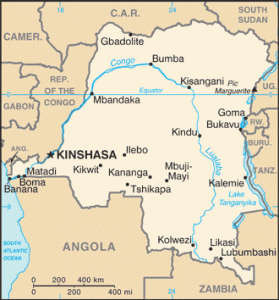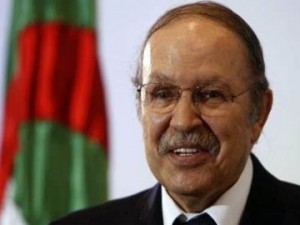Posted in Uncategorized on Apr 23rd, 2014
I came across the following website in some of my online research. It is an interesting tool you can use to compare two countries to one another. I thought it might be of use for our group page.
http://www.ifitweremyhome.com/
Posted in Uncategorized on Apr 22nd, 2014
GPI
Combined Major Factors:
Militarization
Society & Security
Domestic & International Conflict
Note the last two major factors are very close in rankings with on another and are closely associated with political violence because of political instability.
Political Pressure Group & Leaders:

A look at a glance
FARDC (Forces Armées de la République Démocratique du Congo) – Army of the Democratic Republic of the Congo, which commits atrocities on citizens
FDLR (Forces Democratiques de Liberation du Rwanda) – Rwandan militia group made up of some of the perpetrators of Rwanda’s Genocide in 1994
CNDP (National Congress for the Defense of the People) – mainly Congolese Tutsis who want refugees returned and more representation in government
M23 – rebel group comprised largely from ex-CNDP forces
Posted in Uncategorized on Apr 22nd, 2014

Democratic Republic of Congo
Ethnic Group:
Over 200 African ethnic groups of which the majority are Bantu; the four largest tribes – Mongo, Luba, Kongo (all Bantu), and the Mangbetu-Azande (Hamitic) make up about 45% of the population
Languages:
French (official), Lingala (a lingua franca trade language), Kingwana (a dialect of Kiswahili or Swahili), Kikongo, Tshiluba
Population:
77,433,744 (July 2014 est.)
Note: estimates for this country explicitly take into account the effects of excess mortality due to AIDS; this can result in lower life expectancy, higher infant mortality, higher death rates, lower population growth rates, and changes in the distribution of population by age and sex than would otherwise be expected
Birth Rate:
35.62 births/1,000 population (2014 est.)
Posted in Uncategorized on Apr 18th, 2014
Using interactive Google Maps, the Comparative Politics Map Tour provides images and video clips relating to the politics, history, and cultures of the countries discussed in Patrick H. O’Neil’s, Cases in Comparative Politics. There are several cases from Africa that can be accessed so I thought this would be an interesting way to provide some background pertaining to the struggles of politics in Africa.
http://www.wwnorton.com/college/polisci/compol4/interactiveMaps.aspx
Posted in Uncategorized on Apr 17th, 2014
Today,4/17/2014, Algeria had their Presidential elections. I was talking to my neighbor who is from Algeria. She told me that no one in Algeria cares about the election because everyone knows that the incumbent president will win again. Then I heard a story on NPR discussing the elections and they conveyed the same sentiment that my neighbor had. They talked about how there is a lack of support for the elections since President Abdelaziz Bouteflika rewrote the part of their constitution limiting the number of terms the President can serve from 2, 5 year terms, to an unlimited amount of 5 year terms. So today President Abdelaziz Bouteflika won his reelection for his fourth term. The BBC also has a good story covering the Election, why President Bouteflika is popular, and why many were calling for a boycott of the election.

President Abdelaziz Bouteflika
Posted in Uncategorized on Apr 16th, 2014
Posted in Uncategorized on Apr 15th, 2014
Question: Look at a country or countries that you might focus on and look at how they are rated in a few of the global indexes in the folder labeled Global Indexes. Describe and compare, which features seem consistent with political violence?
Relating to the global indexes post, our group focused mainly on Africa and the surrounding countries. As would probably be expected most of the countries in and around Africa have struggled with improving peace, human rights, and stability. This is mainly due to issues surrounding government problems and civil conflict in a lot of the region. The subject of defining homemade terrorism was also brought up as Africa has so many civil issues. There are some areas sprinkled along the coasts and southern part of Africa that are improving but the majority of countries in Africa continue to struggle with improving their overall global peace, global terrorism, and fund for peace indexes. Lack of resources, education, and stable governments also plays into the problems facing many of these countries.
Posted in Uncategorized on Apr 24th, 2013
It was the most ambitious and the deadliest terror attack since the rampage by Pakistani militants through Mumbai five years ago. And it raises the alarming prospect that al Qaeda affiliates and other jihadist outfits could turn parts of northern and western Africa into no-go zones — places too dangerous for Westerners to work, or even visit.
The attack on the In Amenas gas facility left 37 foreign workers dead, according to the Algerian prime minister. It showed that al Qaeda-linked groups now have the resources to reconnoiter and launch complex attacks against places far from their strongholds, using a network of camps and intermediaries throughout the desert.
Posted in Uncategorized on Apr 24th, 2013
On August 7, 1998, two massive bombs exploded outside of the U.S. embassies in Dar es Salaam, Tanzania, and Nairobi, Kenya, killing 224 people — including 12 Americans — and injuring 5,000. Responsibility was quickly traced to al Qaeda. Four years later, al Qaeda operatives struck again, killing 15 people in an Israeli-owned hotel near Mombasa, Kenya, and simultaneously firing missiles at an Israeli passenger jet taking off from Mombasa’s airport. An alarmed United States responded to these attacks with conviction. In addition to proposing significant increases in development assistance and a major initiative on HIV/AIDS, the Bush administration has designated the greater Horn of Africa a front-line region in its global war against terrorism and has worked to dismantle al Qaeda infrastructure there.
At the same time, however, the United States has failed to recognize the existence of other, less visible, terrorist threats elsewhere on the African continent. Countering the rise of grass-roots extremism has been a central part of U.S. strategy in the Middle East, but the same has not generally been true for Africa. In Nigeria, for example, a potent mix of communal tensions, radical Islamism, and anti-Americanism has produced a fertile breeding ground for militancy and threatens to tear the country apart. South Africa has seen the emergence of a violent Islamist group. And in West and Central Africa, criminal networks launder cash from illicit trade in diamonds, joining forces with corrupt local leaders to form lawless bazaars that are increasingly exploited by al Qaeda to shelter its assets. As the war on terrorism intensifies in Kenya and elsewhere, radicals might migrate to more accessible, war-ravaged venues across the continent.
Posted in Uncategorized on Apr 24th, 2013
The news about Somalia can be confusing from far away because different vocabularies are used to describe the multi-faceted conflict occurring there. Its chief players are the Somalian Transitional Federal Government and the Union of Islamic Courts (UIC). This battle engages other local players and histories: secular warlords, neighboring countries, the United States, and foreign jihadists. The U.S. thinks of the Union of Islamic Courts as terrorist because they are Islamist, so the news in the U.S. about events in Somalia is told from the point of view of the war on terror.
Somalia
Somalia juts out of the eastern coast of Africa, where it borders the Gulf of Aden and the Indian Ocean. It shares borders with Ethiopia, Djibouti and Kenya. The capital is Mogadishu. Somalia has been governed since 2004 by a Transitional Federal Government (called the TFG), which is supported by the United States. However, powerful warlords, among other forces, have kept Somalia unstable.


